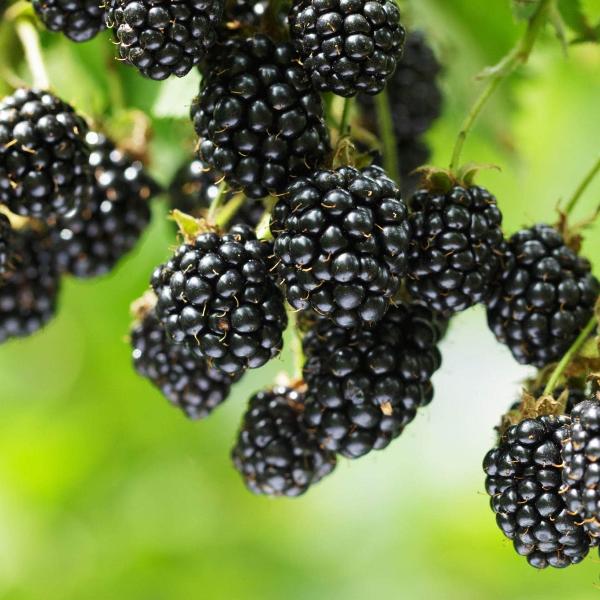Cassis Blackcurrant: A Comprehensive Guide To This Exquisite Berry

Table of Contents
Understanding Cassis Blackcurrant: Origins and Characteristics
Botanical Classification and Growing Regions
Cassis blackcurrant, scientifically known as Ribes nigrum, belongs to the gooseberry family. While its origins trace back to Europe and parts of Asia, it now thrives in various regions with cool climates. France, particularly the Burgundy region, is renowned for its high-quality cassis production. Other key growing areas include Eastern Europe, Canada, and parts of the United States. The ideal climate for blackcurrants involves cool summers and sufficient rainfall. The successful cultivation of this demanding berry often hinges on factors such as soil drainage and protection from frost.
Distinctive Flavor Profile
The cassis blackcurrant boasts a complex and captivating flavor profile that sets it apart from other berries. Its taste is intensely fruity, with a prominent tartness that is beautifully balanced by subtle sweetness. This unique taste is attributed to a unique combination of aromatic compounds, giving it a rich, deep flavor that lingers long after the last bite. Unlike the milder sweetness of raspberries or strawberries, the cassis blackcurrant offers a more assertive, almost pungent flavor. This intense flavor, coupled with its rich dark color, makes it a truly distinctive culinary ingredient.
- Rich, dark color: Its deep purple-black hue is visually appealing and contributes to its intense flavor profile.
- Intensely flavorful: The potent taste is what defines cassis blackcurrant and sets it apart from other berries.
- High in antioxidants: As detailed further below, cassis blackcurrant is packed with beneficial antioxidants.
- Unique aromatic compounds: These compounds contribute to its distinctive and complex aroma and taste.
Culinary Applications of Cassis Blackcurrant
Cassis in Desserts and Confectionery
Cassis blackcurrant finds its most familiar use in desserts and confectionery. Its tartness perfectly complements sweetness, making it an ideal ingredient in cakes, tarts, mousses, and sorbets. Cassis jams and jellies are also extremely popular, offering a burst of intense flavor that elevates any breakfast spread. The berry's deep color adds a visually striking element to baked goods, creating beautiful and delicious results. Its versatility allows it to be paired with other fruits, chocolates, and spices, offering endless creative possibilities.
Cassis in Savory Dishes
Beyond desserts, cassis blackcurrant's versatility extends to savory cuisine. Its tartness cuts through the richness of game meats, such as duck and venison, creating a harmonious balance of flavors. Cassis reductions add depth and complexity to sauces, while cassis vinaigrettes offer a unique twist on traditional salad dressings. The surprising use of this fruit in savory dishes demonstrates its remarkable adaptability.
Cassis Liqueurs and Cocktails
Perhaps the most iconic use of cassis blackcurrant is in the production of Crème de Cassis, a rich and luscious liqueur. This liqueur is the key ingredient in the classic Kir Royale cocktail, a simple yet elegant drink that showcases the cassis's distinctive character. Numerous other cocktails and drinks incorporate this liqueur, highlighting its ability to contribute both flavor and visual appeal to mixed drinks.
- Jams and jellies: A classic way to preserve and enjoy the intense flavor of blackcurrants.
- Sauces and glazes: Adds depth and complexity to both sweet and savory dishes.
- Cocktails and liqueurs: Crème de Cassis is a prime example of its use in alcoholic beverages.
- Ice cream and sorbets: The intense flavor translates beautifully into frozen desserts.
- Baking (cakes, muffins): Adds a unique tartness and rich color to baked goods.
Health Benefits of Cassis Blackcurrant
Nutritional Value and Antioxidant Properties
Cassis blackcurrants are nutritional powerhouses. They are exceptionally rich in antioxidants, particularly anthocyanins, which are responsible for their deep color and contribute to their potential health benefits. They are also a good source of Vitamin C and other beneficial compounds.
Potential Health Benefits
The high antioxidant content in blackcurrants is linked to several potential health benefits. These include improved immune function, anti-inflammatory effects, and potential cardiovascular benefits. However, it is important to note that these are potential benefits and further research is needed to confirm these effects. This information should not be considered medical advice, and always consult with a healthcare professional before making any changes to your diet or treatment plan.
- High in Vitamin C: Contributes to immune system support and overall health.
- Rich in antioxidants: Helps protect cells from damage caused by free radicals.
- Potential anti-inflammatory properties: May help reduce inflammation in the body.
- May support immune health: Due to its high vitamin C content and antioxidant properties.
Selecting and Storing Cassis Blackcurrants
Choosing Fresh Blackcurrants
When selecting fresh cassis blackcurrants, look for plump, dark-colored berries that are firm to the touch. Avoid berries that are bruised, soft, or show signs of mold. The darker the berry, the more ripe and flavorful it is likely to be.
Storing Blackcurrants
Fresh blackcurrants should be refrigerated as soon as possible after purchase. They are best stored in a shallow container lined with paper towels to absorb excess moisture. To extend their shelf life, you can freeze blackcurrants for longer-term storage. Simply spread them out on a baking sheet lined with parchment paper before freezing to prevent them from clumping together, then transfer them to a freezer bag for easier storage.
- Look for plump, dark berries: A sign of ripeness and good quality.
- Avoid bruised or damaged berries: These can quickly spoil and impact the flavor.
- Refrigerate fresh berries quickly: To maintain freshness and prevent spoilage.
- Freeze berries for long-term storage: A great way to preserve the fruit for later use.
Conclusion
Cassis blackcurrant, with its intense flavor, versatile culinary applications, and potential health benefits, stands out as a truly exceptional berry. From elegant desserts to surprising savory dishes and iconic cocktails, its unique characteristics make it a favorite among chefs and home cooks alike. Its growing popularity is well-deserved, solidifying its place as an exquisite ingredient. Discover the exquisite taste of cassis blackcurrant today! Find your favorite cassis blackcurrant recipe now and explore the amazing world of this versatile berry! (Include links to relevant recipes or resources here).

Featured Posts
-
 Racist Tweets Lead To Jail Time For Southport Councillors Wife
May 21, 2025
Racist Tweets Lead To Jail Time For Southport Councillors Wife
May 21, 2025 -
 Watercolor Review A Young Playwrights Script The Real Deal
May 21, 2025
Watercolor Review A Young Playwrights Script The Real Deal
May 21, 2025 -
 The Goldbergs A Complete Guide To The Hit Tv Show
May 21, 2025
The Goldbergs A Complete Guide To The Hit Tv Show
May 21, 2025 -
 Noumatrouff Mulhouse Le Hellfest En Concert
May 21, 2025
Noumatrouff Mulhouse Le Hellfest En Concert
May 21, 2025 -
 Pivdenniy Mist Rekonstruktsiya Pidryadniki Byudzhet Ta Termini
May 21, 2025
Pivdenniy Mist Rekonstruktsiya Pidryadniki Byudzhet Ta Termini
May 21, 2025
Latest Posts
-
 National Treasure Trafficking Antiques Roadshow Episode Results In Arrests
May 21, 2025
National Treasure Trafficking Antiques Roadshow Episode Results In Arrests
May 21, 2025 -
 Trans Australia Run A Record In Jeopardy
May 21, 2025
Trans Australia Run A Record In Jeopardy
May 21, 2025 -
 Antiques Roadshow Couple Arrested After Shocking National Treasure Appraisal
May 21, 2025
Antiques Roadshow Couple Arrested After Shocking National Treasure Appraisal
May 21, 2025 -
 New Attempt To Break The Trans Australia Run Record
May 21, 2025
New Attempt To Break The Trans Australia Run Record
May 21, 2025 -
 Antiques Roadshow Stolen Artwork Results In Couples Imprisonment
May 21, 2025
Antiques Roadshow Stolen Artwork Results In Couples Imprisonment
May 21, 2025
